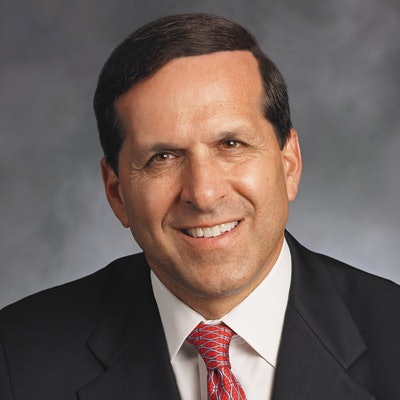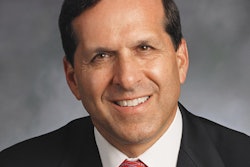
I am delighted to be able to provide a new feature for DrBicuspid.com called Dental Practice Made Simple. Over the past 40 years, dental practices have become increasingly complex to the point where it is creating increased stress, fatigue, and even burnout for some doctors and team members. This was amplified exponentially by the pandemic, and now it's time for dental practices to make practice management simpler.
While providing excellent dental care is the top priority, practice management involves a lot of areas that must be addressed consistently, whether it is mastering practice management software; studying reams of reports; dealing with insurance companies, codes, and electronic filing protocols; or managing patients with a wide variety of personalities. Additionally, in dentistry the main producer (the doctor) leads the practice while simultaneously working to provide high-quality patient care and create practice production. This scenario can be very rewarding, but not when things are ultracomplicated.
Simplification is being taught as a discipline in top business schools all over the world. Dentists need this type of education, and in this new video series you will be able to access a new pearl of wisdom each week that focuses on creating practice simplicity and increasing daily enjoyment for the doctor and team.
Complexity factors
 Dr. Roger P. Levin.
Dr. Roger P. Levin.This video series emerged from the realization that the pandemic had pushed dental practice complication past the inflection point. Dental practice complexity had been growing prior to the pandemic, but the pandemic pushed it further and the list of complex issues seems endless: Paycheck Protection Program (PPP), personal protective equipment (PPE), new insurance codes, new patient behavior, staffing issues, integrating new technology (clinical and administrative), etc. A small number of practices decided to simply close rather than deal with the added layers of complexity and issues.
Fortunately, we are now moving through the pandemic, and dentistry is somewhat back to normal within pandemic-oriented changes. But normal also included reasonably high levels of complexity, and it has become obvious and essential that practices must implement step-by-step systems and single-point activities to make dental practice simpler.
There are several factors that have contributed and will continue to contribute to the levels of complexity the dentist and teams are experiencing. These include the following:
1. Advances in services, options, materials, and equipment
50 years ago, dentistry was much simpler. Changes came slowly, and there were a limited number of options. There were no osseointegrated implants, clear aligners, composites, whitening products, veneers, practice management software, lasers, digital radiography, or digital anything.
These wonderful advancements in diagnostic and treatment tools have enhanced dentistry tremendously, but they also come at a cost. Simply managing different services, different insurance codes, proper scheduling of patients, and the associated factors alone can create a much higher level of complexity.
Continuing education and learning curves to master new techniques, train the team, and keep up add another level of complexity. Time and effort in decision-making, product or equipment selection, technical issues, etc., add more.
In other words, every advancement also comes with associated factors that create more complexity -- until the point where simplicity models are developed and put in place.
2. Team training
Adding to the simplicity of dentistry 50 years ago was the fact that you could hire almost anyone to work in a dental practice and train them quickly. In fact, one of the practice management recommendations was to identify a restaurant server or bank teller that you liked and offer them a position if they had a great personality.
All the advancements described above have made this option no longer feasible. The learning curve for dental staff is longer than ever before. Mastering all the new technologies and techniques is not easy, and if the staff isn't fully trained in all areas, then practice production will suffer and complexity will grow. This can lead to breakdown, chaotic days, and customer service issues.
Team training will now have to be continual and consistent for practices to keep up with advancing technologies. Keep in mind that every practice does not need every technology and that every technology does not have to be mastered at the highest possible level.
3. Stressful and chaotic days
As a dentist, I would like all my colleagues to have excellent days and a very satisfying career. This cannot be achieved if complexity overwhelms the practice. Prior to the pandemic, dental practices were busy and stressful -- but functioning. At this stage of the pandemic, we are seeing many practices that remain overwhelmed.
The days are chaotic and fatiguing, the team is less than happy and often complains, and more and more falls on the doctor. If we add the possibility of staff turnover, which is now exacerbated by a nationwide staff shortage, it is easy to understand how complexity is making dental practice less fun and less satisfying.
Dental Practice Made Simple
The good news is that you can make your practice more fun and more satisfying by taking steps to reduce complexity. This begins by implementing excellent systems that eliminate unnecessary steps and waste and training the team to carry them out. All systems should have a set of measurements that clearly show each team member the objectives that must be reached and how to use the systems to make that happen.
In addition to systems, another concept for encouraging practice simplicity is the act of removing something whenever you add anything new to the practice. For example, if you add a step to a system then you should seek to remove a step from that system (or another system in the practice). This may sound theoretical, but it actually works.
Over the past few years, Levin Group has explored methods and strategies like these that contribute to making dental practice simpler. Today, we have an excellent understanding of how to create simplicity in dental practices, and these ideas will be brought to DrBicuspid.com readers in a weekly video format. The Dental Practice Made Simple video series will provide ideas and strategies that will simplify the practice as dentistry will inevitably increase in complexity with new technologies, materials, or services.
I sincerely hope that this new video series will help dentists and dentals teams to move back to easy, effortless, and enjoyable days and highly satisfying careers. The objective is simple: Go home at the end of each day feeling like it was a great and enjoyable day.
Dr. Roger P. Levin is CEO of Levin Group, a leading practice management and marketing consulting firm. To contact him or to join the 40,000 dental professionals who receive his Practice Production Tip of the Day, visit LevinGroup.com or email [email protected].
The comments and observations expressed herein do not necessarily reflect the opinions of DrBicuspid.com, nor should they be construed as an endorsement or admonishment of any particular idea, vendor, or organization.



















